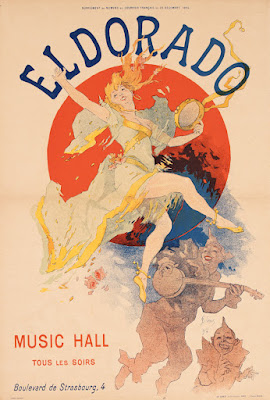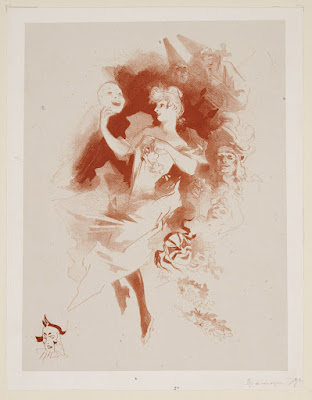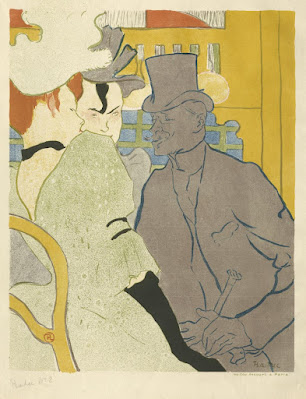
The earliest prints were all black and white, using methods such as woodcut, wood engraving, and etching. When the technology made it possible to print in full color, tastemakers in France dismissed them, arguing that they were cheap and low-class.
The exhibit includes fine examples of these early intaglio color prints, such as the one above.
When color lithography was developed, artists embraced it as a fast and efficient method that was perfect for large public posters. The show includes many prints by Jules Chéret, the master of the show poster.
Jules Chéret, Lady with a Mask [Comedy], c. 1891, Lithograph in sanguine on paper. The Clark Art Institute, 1955.2391.
I was also impressed by the informal sanguine prints by Jules Chéret, where he explores different arrangements of carefree figures.
The exhibition also includes prints by Pierre Bonnard, Mary Cassatt, Paul Cézanne, Maurice Denis, Camille Pissarro, Edouard Vuillard, and Henri de Toulouse-Lautrec.
I was hoping the show would include printed works by Alphonse Mucha. He was Czech, technically, but he was the major star in the Paris print scene, and his graphic works were extremely influential. Théophile-Alexandre Steinlen and Eugène Grasset were also notably missing from the show, perhaps because the Clark doesn't have good examples of the color prints in their collection.
A secondary exhibit called "Competing Currents" about Japanese prints of the 20th century makes a perfect enhancement to the show. I'll share more about that on a future post.
Hue and Cry: French Printmaking and the Debate Over Colors closes March 6. Admission is free for the month of January.




تعليقات
إرسال تعليق